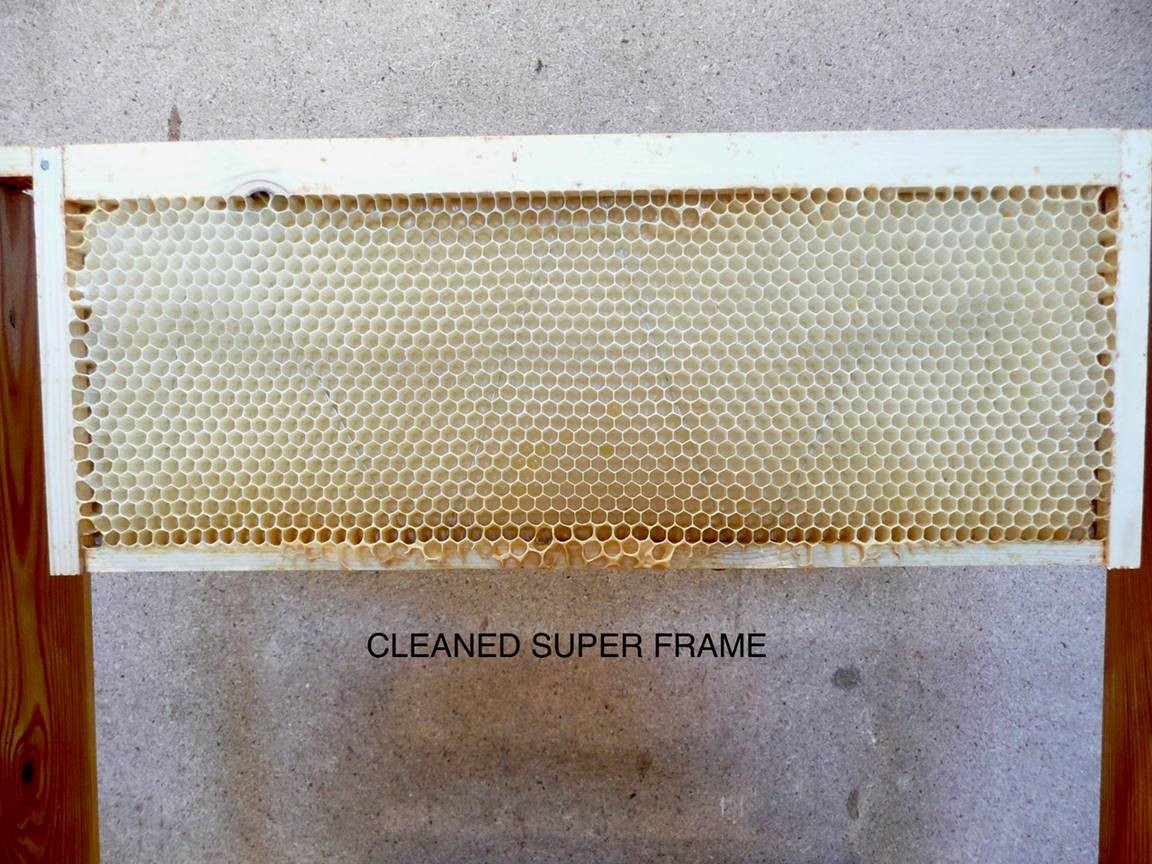Bee Blog October
I am Gerald Bushby (pronounced bush bee!) a beekeeper in Weston on the Green, a small village in Oxfordshire. I am going to be writing a monthly blog about the bees in my apiary. I hope you will find it interesting. I should start by saying that I am not an expert, having only kept bees for three years. Anything I say is my own personal opinion; I accept that there may often be other views and opinions.
Perhaps I collected the summer honey too soon this year. The weather had turned cool during the second week of August and I thought summer was over and autumn had begun. Wrong. Summer came back again in September and all of the hives became very active once again. On some days the activity looked like a mid summers day when the nectar was flowing freely, there were so many bees coming and going to the hives. Had it been earlier in the year I would have thought the bees were preparing to swarm.
I think I made the right decision however to collect the summer honey in early August. It has given the bees the opportunity to lay down honey for the winter period in the brood box. I opened up all of the hives a few days ago and was pleased to see that that is just what they have been doing. Many brood frames were heavy with either nectar or capped honey. The two new hives still have empty outer frames but the original hive had stores begun on all of the frames. If they keep laying down stores at the same rate for a while longer I may not have to provide the bees with supplementary feeding this winter.
Looking back to my August Blog I included a photograph of a full super of capped honey. To extract the honey I had to cut off the wax cappings to the individual cells and spin out the honey. This is a somewhat destructive process. The wax cells are made of very thin wax which can damage very easily. The spinning process removes most of the honey but the honey being a sticky substance cannot be fully removed from the individual cells. I have explained previously how the empty frames are cleaned by putting them back into the super and placing it on top of the brood box for the bees to clean and repair. My photograph this month shows what a good job the bees make of this cleaning and repair process. All of the old honey is removed and the wax of each individual cell looks as if it has been newly made. The vast majority of the cells are all precisely the same size but one or two, especially at the edges are a little distorted to fill the space that is available.
This cleaning process is so useful as beekeepers use the same frames from season to season for several years so that the bees do not have to spend time drawing out new cells each season. This gives the bees more time to be out collecting nectar rather than spend time constructing cells in which to store the nectar.
To allow for spare capacity at times of peak flow of nectar, most beekeepers tend to provide three supers per colony of bees. In my case this means nine supers each containing ten frames, a total of 90 individual frames. This creates a storage issue and also some winter work. The wax frames are attractive to various bugs and beasties, in particular the Wax Moth; Achroia grisella.
The adult moth lays its eggs in the combs that hatch into large larva which tunnel through honeycomb, eating the wax. In its last stages of development the larva will pupates and burrow into any wood surface within the beehive. It forms a cocoon attached firmly to the wood that it will further develop within, emerging as a moth to carry on the cycle. This means any and all wood surfaces are badly damaged. The worst being the frames themselves. The typical area that wax moths burrow into are the underside of the frame lugs. This means that the entire frame structure is compromised as a result and may have to be thrown away.
A strong colony will keep the moths at bay, chasing them out of the hive but if they have had the opportunity to lay their eggs and they are still present in the empty super frames that are being stored over winter, these eggs will hatch out and start the whole life cycle again destroying the wax combe. How does the beekeeper overcome this problem? There are various sprays and fumigation processes using Acetic Acid or paradichlorobenzene. I choose not to use these. I am concerned that there is always a possibility of contamination of the wax foundation that may affect bees or the honey.
Another treatment is freezing the super frames for a period of a week. This requires a large chest freezer which I feel is not a practical proposition for me. The method I use is to store the supers in a stack, separated by newspaper to isolate each super and constantly monitor the frames, every week or so, throughout winter and physically cut out any evidence of the moth presence that occurs. I may have less to do in the winter months but beekeeping is a 12 month operation.
I am a proud supporter of the ‘Bees for development’ charity, my love of the bee drew me to this wonderful UK based charity and the great work they do around the world with Bees and the impact they can have on people’s lives. Please help me support this wonderful organisation, as 2BScientific will be doing with donations to this hard-working charity.
